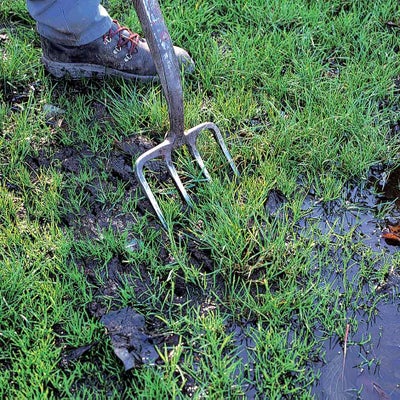
Quick facts
Suitable for - Any wet, poorly drained garden, where there is somewhere for surplus water to go
Timing - Late summer to early winter
Difficulty - Difficult
Suitable for...
Drainage is important for gardens, but not every garden will need drainage installed. If you are considering installing drainage, think about where the water will go. Ditches, streams or soakaways (deep holes filled with rubble that penetrate to porous rocks) are all suitable. Local byelaws usually prohibit adding drainage water from gardens to sewers or storm drains.
Where there is nowhere for water to go, consider growing in raised beds, or perhaps consider a bog-style garden.
When to install drainage
Installing drainage involves burying porous pipes at about 45cm (18in) deep. This is very disruptive and is difficult to accomplish when the soil is wet. The best time for this type of ground work is from late summer until early winter when ground conditions are usually driest.
Is drainage necessary?
The first thing to do is to identify areas of poor drainage and actually test how bad the drainage is:
- Look for surface puddling after rain, which normally indicates compacted layers beneath the surface. Be aware that natural springs may occur and need piping away. Also broken pipes may cause wet spots until mended.
- Pour water into a 30-60cm (1-2ft) deep hole and cover to exclude rain. If water remains for hours or even days the soil may benefit from installing drainage.
Before going ahead and installing a drainage system, consider if normal cultivation methods might be all you need to improve drainage. This is often the case for old, established beds and borders that may have become compacted over time. In this case, consider digging (or rotavating) the beds and adding organic matter. See our advice in soil: cultivation for more information.
Types of drainage
Simple ditches
In some cases, digging ditches about 90cm (3ft) deep with sloping sides across the lower end of a slope, will be enough to take away excess surface water. You may need to hire a small pedestrian-controlled trenching machine for this.
French ditches
Where open ditches are unsuitable, French ditches can be constructed by filling the ditch with coarse gravel topped with permeable membranes or upturned turf to keep soil from entering the gravel. Finally finish with topsoil.
Piped drainage
Severe drainage problems require piped drainage, where perforated plastic pipe is laid in trenches on a firmed 5cm (2in) bed of coarse gravel and covered with 10cm (4in) of gravel. Designing and installing piped drainage on a large scale is skilled and heavy work and is best accomplished by a landscape or specialist contractor.
On a small scale, firstly identify an outlet for water. Then lay perforated pipes (available from good builder’s merchants or drainage contractors) below the level of cultivation, usually 40-60cm (16-24in) deep and 3-6m (10-20ft) apart. The trenches must follow a natural slope or a constructed one with a fall of 1:40 towards the outlet you have identified for drainage water. A herringbone layout is usually used, with the feeders meeting a main line at an angle of 45 degrees
Problems
Be sure to avoid cutting pipes and cables when trench digging.
It can be difficult to lay pipes with sufficient enough fall for water to drain away. In this case consider installing electric pumps and float switches.
Another common problem is finding a place for water to go. It may be possible to work with neighbours or other local landowners to find an outfall for surplus water. It is rather anti-social to allow surplus water to collect at the lower end of your property to flood your neighbours gardens. However in some circumstances a seasonal pond or swale might be the solution.




